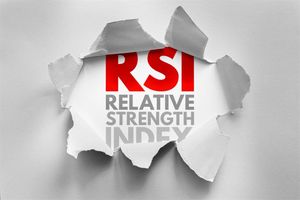
Morgan Stanley (NYSE: MS), a titan of Wall Street, is making monumental strides into the cryptocurrency arena, signaling a profound shift in how traditional finance views and interacts with digital assets. These strategic moves, culminating in plans to offer direct cryptocurrency trading to its E*Trade clients by the first half of 2026, are not merely an expansion of services; they represent a significant legitimization of the crypto market. While initially focusing on Bitcoin (BTC), Ethereum (ETH), and Solana (SOL), this institutional embrace carries substantial implications for the entire digital asset ecosystem, including an indirect but powerful validation for XRP holders and its underlying technology. The influx of institutional capital and expertise is poised to reshape market dynamics, fostering greater stability, liquidity, and mainstream acceptance, ushering in a new era where digital assets are increasingly integrated into conventional financial portfolios.
Unpacking Morgan Stanley's Strategic Foray into Crypto
Morgan Stanley's journey into the digital asset space has been a carefully orchestrated, multi-year endeavor, reflecting a cautious yet determined approach to a rapidly evolving market. The firm's initial foray began in 2021, when it became the first major U.S. bank to offer its wealthy clients access to Bitcoin funds, providing exposure through partnerships with Galaxy Digital and a joint effort between FS Investments and NYDIG. This early move demonstrated a recognition of crypto's potential as a diversified portfolio component.
The firm further deepened its commitment in August 2024, by allowing its wealth advisors to recommend spot Bitcoin exchange-traded funds (ETFs) to eligible clients, acknowledging the growing demand for regulated crypto investment vehicles. By May 2025, reports began to circulate hinting at an expansion of cryptocurrency trading capabilities through ETrade, Morgan Stanley's online brokerage subsidiary. These rumors were officially confirmed in September 2025, with Morgan Stanley announcing its plans to launch cryptocurrency trading for ETrade clients in the first half of 2026. This service will initially support spot trading of Bitcoin, Ethereum, and Solana.
To facilitate this ambitious undertaking, Morgan Stanley has strategically partnered with Zerohash, a digital asset infrastructure provider, which will manage the necessary liquidity, custody, and settlement services. Morgan Stanley's investment in Zerohash's $104 million funding round further underscores its commitment to building robust crypto infrastructure. Jed Finn, head of wealth management at Morgan Stanley, emphasized that the E*Trade launch is merely "phase one" of a more extensive digital asset strategy, with future plans including a comprehensive cryptocurrency wallet solution and deeper integration of crypto into broader asset allocation frameworks. The firm will introduce a new crypto asset-allocation strategy, allowing clients to diversify their portfolios with digital assets, typically ranging from zero to a few percentage points based on individual risk profiles. Beyond direct trading, Morgan Stanley is actively exploring wider applications of tokenization, aiming to streamline back-office operations like settlement and clearing processes. Initial market reactions have been largely positive, with analysts viewing Morgan Stanley's move as a significant step towards mainstream crypto adoption.
Winners and Losers in the Institutional Crypto Shift
Morgan Stanley's (NYSE: MS) aggressive push into cryptocurrencies is set to create a ripple effect, delineating clear winners and losers across the financial landscape. Morgan Stanley itself, along with its E*Trade platform, stands to be a primary beneficiary. By offering direct crypto trading and asset allocation strategies, the firm can attract a new segment of investors, deepen relationships with existing clients, and solidify its position as a leader in innovative financial services. This strategic pivot allows them to capture a share of the burgeoning digital asset market, enhancing revenue streams and competitive advantage.
Other traditional financial institutions will likely feel increased pressure to follow suit. Competitors like Robinhood Markets (NASDAQ: HOOD) and Charles Schwab Corporation (NYSE: SCHW), which already have some crypto offerings or are considering expanding them, will face intensified competition. Those slower to adapt risk losing market share and relevance in a financial world rapidly embracing digital assets. The move could also compel other major banks that have been hesitant to fully embrace crypto to accelerate their own digital asset strategies, further blurring the lines between traditional and decentralized finance.
For the cryptocurrency market itself, Bitcoin (BTC), Ethereum (ETH), and Solana (SOL) are immediate winners, as they will be the first digital assets directly accessible to E*Trade's millions of clients. This expanded access is expected to drive increased liquidity and potentially higher demand for these specific cryptocurrencies.
While not directly included in Morgan Stanley's initial ETrade offerings, XRP (XRP) and its issuer, Ripple Labs, stand to gain significant indirect validation. Morgan Stanley's analysis has consistently highlighted Ripple as a leading international payment solution, a credible alternative to the SWIFT system, capable of significantly reducing processing costs and enabling near-instant settlements for cross-border payments. This institutional endorsement of XRP's utility as a bridge currency in global payments could fuel demand from banks and remittance providers seeking more efficient payment rails. While direct investment avenues through Morgan Stanley are not yet available for XRP, the firm's positive view on its underlying technology reinforces its long-term potential as a foundational element of a more efficient global financial system, potentially capturing a substantial share of the cross-border payment market. Crypto-native exchanges, while still dominant, may experience a shift in trading volumes as more retail and institutional money flows through traditional, regulated platforms like ETrade.
The Broader Significance: A Paradigm Shift in Finance
Morgan Stanley's deep dive into the crypto space is more than just a new product offering; it represents a pivotal moment in the broader evolution of the financial industry. This increasing institutional involvement grants digital assets unprecedented mainstream legitimacy, transitioning them from a speculative niche to a recognized and investable asset class. This maturation is critical for the long-term health and stability of the crypto market.
The entry of significant institutional capital promises enhanced market liquidity and stability. Large capital injections can reduce volatility, tighten bid-ask spreads, and create a more robust trading environment, moving the market away from its historically retail-driven, often volatile nature. This demand also drives the development of more sophisticated and compliant market infrastructure, including improved security protocols, greater transparency, and adherence to regulatory standards, which are essential for attracting even more institutional players.
Regulatory clarity is both a catalyst and a consequence of institutional adoption. Favorable regulatory shifts, such as those seen under the Trump administration or initiatives like the GENIUS Act (Generating Innovative New Ideas for the United States Act), have emboldened Wall Street firms to expand their crypto offerings. As more institutions engage, there's a greater impetus for policymakers to establish clear, comprehensive regulatory frameworks, which in turn fosters further adoption.
This trend signifies an evolution of market dynamics, where the influence shifts from primarily retail speculation to one increasingly shaped by large financial entities. This introduces more sophisticated trading strategies, such as algorithmic trading and comprehensive market analysis, leading to more orderly price discovery. Furthermore, it will likely spur the creation of more crypto-based financial products, including new ETFs and derivative instruments, making digital assets more accessible to a broader range of investors. Cryptocurrencies also offer a unique risk-return profile and have shown low correlation to traditional equities, presenting valuable opportunities for enhancing portfolio diversification. The competitive landscape is undeniably shifting, with traditional institutions now directly challenging existing crypto-native exchanges, fostering innovation and blurring the lines between traditional and digital finance. This foundational shift points towards a future where a blockchain-enabled financial system becomes the norm.
What Comes Next: Navigating the Digital Frontier
The immediate future following Morgan Stanley's announcement is marked by the anticipation of E*Trade's cryptocurrency trading launch in the first half of 2026. This will provide millions of retail clients with a regulated and familiar gateway to invest in Bitcoin, Ethereum, and Solana, likely channeling significant capital into these specific assets. In the short term, other major financial institutions will be closely watching the success and client uptake of Morgan Stanley's new offerings, which could trigger a wave of similar announcements from competitors.
Looking further ahead, Morgan Stanley's "phase one" strategy suggests a more expansive vision. We can expect the development of a comprehensive cryptocurrency wallet solution for clients, allowing for more direct interaction with digital assets. The integration of crypto into broader asset allocation frameworks will also evolve, potentially offering more sophisticated portfolio construction options that incorporate a wider array of digital assets. Morgan Stanley's exploration of tokenization for streamlining back-office operations hints at a future where blockchain technology underpins more fundamental aspects of financial infrastructure, extending beyond just trading.
For XRP holders, while direct trading on E*Trade is not on the immediate horizon, the continued institutional validation of Ripple's technology as a superior cross-border payment solution will remain a critical factor. Any future regulatory clarity surrounding XRP, particularly in the United States, could pave the way for its inclusion in institutional offerings, potentially unlocking significant liquidity. The market opportunities that may emerge include the growth of prime brokerage services for digital assets, increased demand for institutional-grade custody solutions, and the development of new financial products that bridge traditional and decentralized finance. Challenges might include navigating evolving regulatory landscapes, managing cybersecurity risks inherent in digital assets, and integrating complex blockchain technologies with legacy systems. The potential scenarios range from a gradual, steady integration of crypto into mainstream finance to an accelerated adoption driven by competitive pressures and technological breakthroughs.
A New Dawn for Digital Assets
Morgan Stanley's bold moves into the cryptocurrency space represent a definitive turning point for the financial markets. The key takeaway is the undeniable mainstreaming of digital assets, driven by a major Wall Street player. This isn't just about offering a new investment product; it's about a foundational shift that legitimizes cryptocurrencies as a valid and increasingly integral component of modern financial portfolios. The market is moving beyond speculative interest to a more mature, institutionally-backed asset class.
Moving forward, the market will likely see increased liquidity, enhanced stability, and the rapid development of robust, compliant infrastructure. This institutional embrace is also a powerful catalyst for regulatory clarity, which is crucial for the sustained growth and broader adoption of digital assets. For XRP holders, while direct trading on Morgan Stanley's new platform isn't immediate, the firm's consistent recognition of Ripple's technology as a superior alternative to SWIFT provides significant long-term validation for XRP's utility in global payments.
Investors should closely watch several key areas in the coming months. These include the successful launch and client adoption of E*Trade's crypto trading platform, any further expansions of Morgan Stanley's digital asset strategy (such as new cryptocurrencies or wallet solutions), and the competitive responses from other major financial institutions. Regulatory developments, particularly concerning the broader crypto market and specific assets like XRP, will also be paramount. This era marks the beginning of a truly integrated financial ecosystem where traditional and digital assets coexist and converge, promising both exciting opportunities and new challenges for market participants.
This content is intended for informational purposes only and is not financial advice







